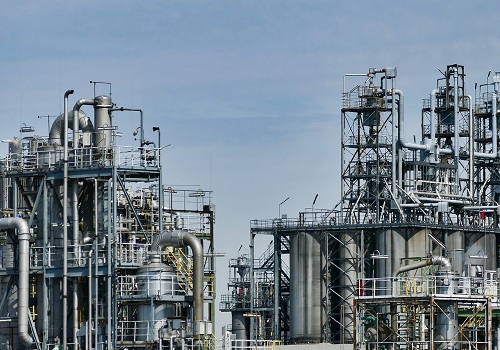EIA Predicts Oil Price Decline Amid Oversupply Concerns by Amit Gupta, Kedia Advisory

The U.S. Energy Information Administration (EIA) projects oil prices to decline in 2025 and 2026 due to global oversupply. Brent crude is expected to average $74 per barrel in 2025 and drop further to $66 in 2026. U.S. crude production is anticipated to grow, with the Permian Basin leading the output surge. While global oil production is forecasted to reach 104.4 million barrels per day in 2025, demand is likely to lag behind at 104.1 million barrels per day. Non-OPEC producers and eased OPEC supply cuts will further increase production. The imbalance between supply and demand could continue to exert downward pressure on oil prices over the coming years.
Key Highlights
* Brent crude prices expected to average $74 in 2025 and $66 in 2026.
* U.S. oil production revised up to 13.55 million bpd for 2025.
* Permian Basin to drive over half of U.S. oil output by 2026.
* Global oil supply to reach 104.4 million bpd, outpacing demand.
* OPEC easing cuts and non-OPEC producers boosting output contribute to oversupply.
Oil prices are forecasted to face downward pressure in 2025 and 2026, according to the U.S. Energy Information Administration’s (EIA) latest Short-Term Energy Outlook report. Brent crude is projected to average $74 per barrel in 2025, marking an 8% decline from current levels, and drop further to $66 per barrel in 2026. Similarly, U.S. crude prices are expected to average $70 in 2025 before sliding to $62 in 2026.
The decline in prices is primarily attributed to rising global production outpacing demand. U.S. crude production is anticipated to reach a record 13.55 million barrels per day (bpd) in 2025, driven by growth in the Permian Basin, which is projected to contribute over half of the country’s output by 2026. Globally, oil and liquid fuel production is forecasted to average 104.4 million bpd in 2025, while demand is expected to lag at 104.1 million bpd.
Other contributing factors include eased supply curtailments by OPEC and increased output from non-OPEC producers. The demand slowdown in major energy-consuming nations like the U.S. and China, coupled with expectations of weaker economic growth, further supports the bearish outlook.
This oversupply dynamic underscores the challenges for the oil market in maintaining price stability. With supply growth outstripping demand, market participants may need to brace for extended price declines in the coming years.
Finally
Oil prices face sustained downward pressure through 2025 and 2026 due to oversupply, with Brent crude potentially dropping to $66 per barrel.
Above views are of the author and not of the website kindly read disclaimer





















